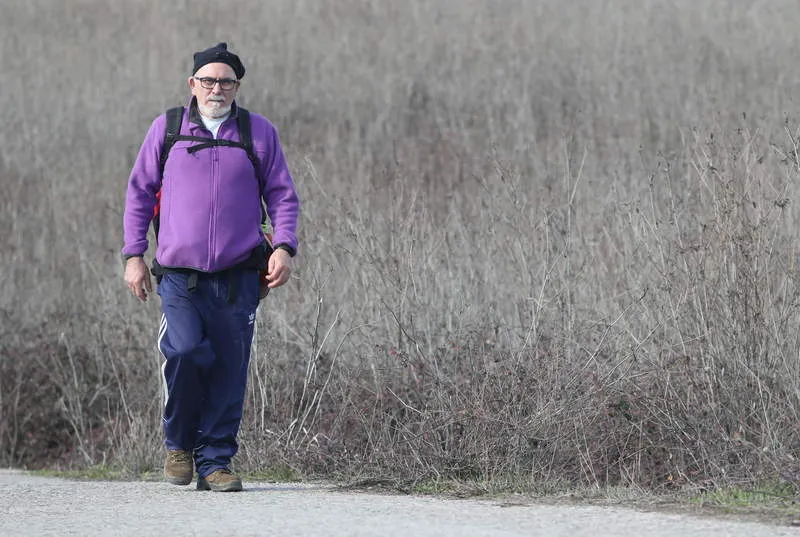The Bierzo Diabetics Association, Adebi, accumulates thousands of kilometers of a path contrary to the Diabetes path.
The bass of the El Toralín de Ponferrada stadium are the zero point of the more than 250 kilometers that runs to any of its associates, an average of 20 kilometers per month.Sport is life.It is life for people with diabetes.«Walking is the way to improve the quality of life».
The president, Pedro Mora, is only the tip of the iceberg of an association that is about to turn fifty, one of the oldest in Spain that fights the effects of diabetes.Cycling, races, walks, all kinds of exercise to keep glucose, practices that suppose half of the success of pharmacological treatments and food."Six years ago we started these routes because it is the only way to improve" and the stage is the toral "which is like a natutal space with a thousand paths."
The bad weather has delayed the walks, which this year begins in February.The days chosen are Mondays and Wednesdays from 4:30 p.m. to 7:00 p.m.«We walk two hours every day.We chose the most spectacular tours, we encourage people to go out and know fantastic places in the Bierzo, such as Wolframio mines.
Diet and exercise are inseparable.The entry of carbohydrates has to supplement with a higher caloric expense for sport.The food must be fractionated (every 3 to 4 hours) since, in this way, hypoglycemia is avoided.
In addition, food intake should adjust to the action of medicines for the treatment of diabetes, be they oral hypoglycemic or the action of injected insulin.This is called education in the management of diabetes.In the association that Pedro Mora has run for six years, workshops are also organized.
«This year we have a diabetes education workshop.The endocrine barely have time in hospital consultations so we have thought that they come here, to the headquarters, to give workshops.
Educating in diabetes is very important, especially for people who debut for the first time and for the fathers and mothers of children who have the diagnosis with 2 or 7 years ».Type 1 diabetes occurs more frequently in young children and adults, but may appear at any age.
The pancreas does not produce insulin.Insulin is a hormone that helps glucose penetrate cells to supply energy.Without insulin, there is an excess of glucose that remains in the blood.Over time, high levels of blood glucose can cause serious problems in the heart, eyes, kidneys, nerves, gums and teeth.
«In the task of educating in diabetes we are.Parents are those who have to take control ».Pedro Morán's message is optimistic: "This is not the end, it is the beginning of the rest of our life."
But the reaction to diagnotic is not the same in all people.«There are many parents who do not assume that their children are diabetic and wonder why it has happened.To help them we have a psychologist who teaches to change life patterns ».
Diabetes is usually a silent disease and symptoms are clearer in people with type 1 diabetes (when the organism does not produce insulin), while in type 2 (insulin does not work in the body how it should be) they are more difficult toRecognize, because they generally have no symptoms at the beginning and may not have for many years.Type 2 is linked to obesity.


